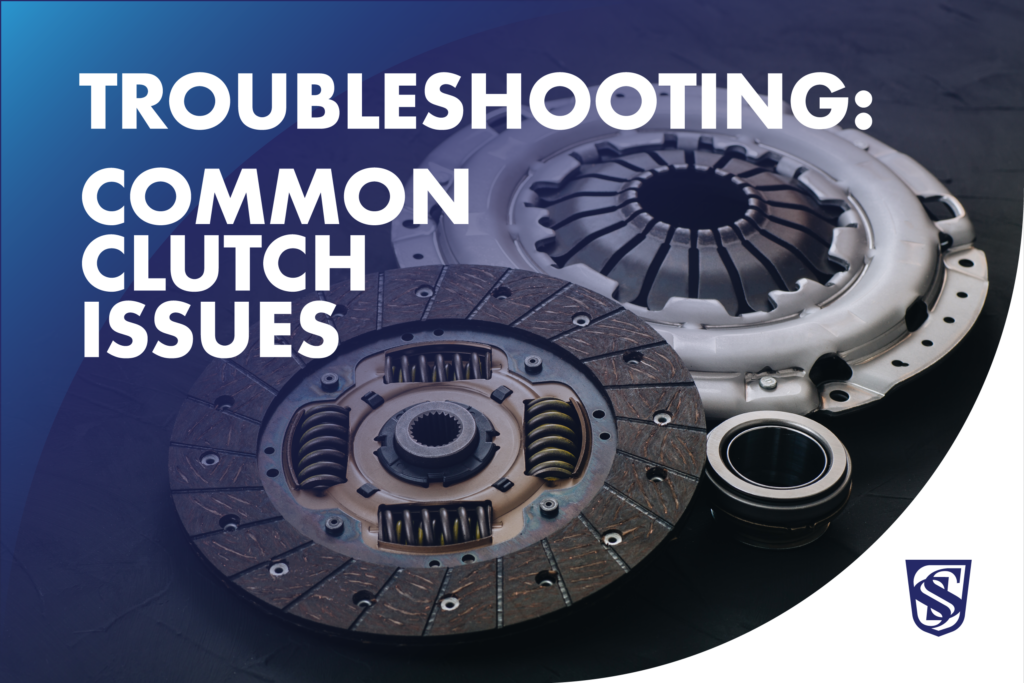Clutch issues are a common car problem that can lead to transmission issues and headaches for car owners. Here, we’ll look at everything you need to know about a car clutch service, from clutch pressure plate failure symptoms to clutch pressure plate replacement costs.
How a Car Clutch Works
- A clutch disengages gears in a vehicle’s transmission, allowing the driver to change gears. It connects the engine to the transmission, allowing there to be a smooth and safe transition between gears.
- When engaged, the clutch presses against the flywheel and absorbs the energy being output by the engine. This gives the gearbox the ability to switch between different gear sizes.
- In manual transmission cars the driver has control over the clutch and gearbox. This is accomplished through the use of a shifter and clutch pedal. Pressing down the clutch pedal engages the clutch. When the clutch is engaged the driver can move the shifter and choose which gear to be in.
- It connects the crankshaft of an internal combustion engine to the input shaft of the transmission. This allows the engine to turn the wheels via the transmission.
- In most vehicles, there are three different types of clutches: manual, automatic, and semi-automatic.
Parts of the Clutch
- Pressure Plate
- Clutch Disc
- Flywheel
- Release Bearing
How to Determine Clutch Slipping
Clutch slipping occurs when the clutch pedal is pushed down just enough to engage the clutch without fully depressing it. This causes the clutch to slip, allowing some rotation to occur between the engine and transmission. As a result, the vehicle slows down or stops completely.
The most common reason for clutch slipping is worn clutch plates. They wear out over time because they are constantly being forced into contact with each other. If the clutch plates become too thin, they won’t provide enough pressure to keep the clutch engaged.
Here are some other signs of clutch problems:
- Engaging the clutch pedal is difficult
- Grinding feelings when gear shifting
- Loose clutch pedal
- Overheating
- Slipping gears
- Pulsating clutch pedal
- Vibration in transmission
How Often Should You Change Your Clutch
Wondering when to replace a car’s clutch? Replacement intervals vary by vehicle and driver habits. Some vehicles require clutch replacements every 30,000 miles while others are fine with 60,000-mile changes. Clutch life depends on how hard you use it, how much heat it gets, and whether you change the oil regularly. If you keep up with regular maintenance, you could potentially see 200,000 miles of trouble-free operation.
Clutches don’t have a recommended replacement interval like brakes do. But, they do wear down over time. A good rule of thumb is that clutches wear out about one-half of what the manufacturer recommends. So, if the manufacturer says 10,000 miles, you might want to replace yours at around 5,000 miles.
Clutch Installation Tips
- First, figure out exactly what is causing the slipping clutch. In some cases, you might just need to clean up the clutch plates and retune the clutch springs. Other times, the entire clutch assembly needs replacing.
- You’ll want to make sure you are familiar with every part of the clutch and what it does. For instance, the purpose of pressure plate in clutch is to apply pressure to the friction material of the clutch disc. This causes it to engage, allowing the connection between the input shaft and output shaft to occur.
- In some instances, the issue could be related to the transmission itself. Getting a transmission inspection will help to rule out this possibility.
- A properly installed clutch pressure plate should sit flush against the flywheel. When there is too much gap between the pressure plate and the flywheel, friction causes excessive heat build up inside the clutch. This leads to premature failure of the clutch components.
- In some cases, the clutch assembly itself may need to be replaced. This includes the clutch disc, pressure plate, flywheel, and friction material. It is important to note that the entire process takes place under high temperatures. Therefore, it is essential that the mechanic wears proper protective gear. In many cases, it may be wise to take the car to a transmission auto shop to have the clutch assembly replaced safely.
- A basic clutch repair could range anywhere between $300 to $2,500. However, if the problem is severe, the repair might require more extensive work. For example, if the vehicle needs a complete clutch replacement, the costs are likely to go beyond $1,000.
- On average, the total cost of repairing a clutch should fall somewhere around $550.
How Can You Prevent Clutch Damage
Now that you know the warning signs of clutch slippage, you should be able to identify if clutch slippage is occurring and what steps need to be taken to fix the problem!
Identifying the problem and learning about the flywheel, release bearing, and pressure plate clutch parts are all important steps toward protecting your car’s clutch. To prevent clutch damage, make sure you change your clutch at regular intervals. You also want to have it properly installed either at home or by a professional, to prevent causing more damage to the car.
